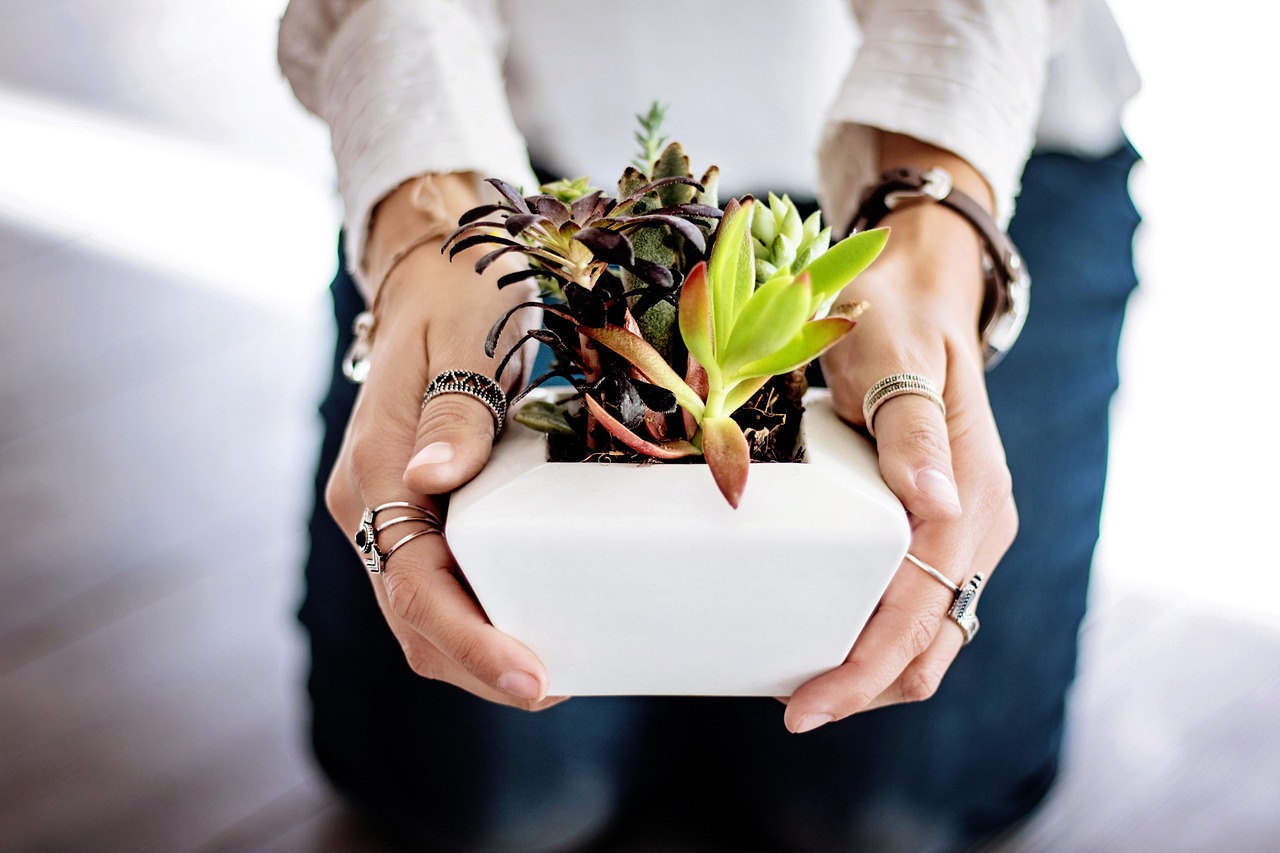Planting under trees can transform your garden into a lush, layered paradise. This technique not only maximizes space but also creates a diverse ecosystem that thrives in shaded areas. Understanding how to choose the right plants is key to success.
Many gardeners overlook the potential of spaces beneath trees, often assuming that the shade will limit plant growth. However, with the right strategies and plant selections, these shaded zones can flourish. Trees provide essential benefits to gardens, such as shelter from harsh sunlight, wind protection, and moisture retention in the soil.

Before diving into the specifics of planting under trees, it’s important to consider a few key factors. The type of tree, its root system, and the amount of shade it provides are crucial for selecting compatible plants. Not all trees create the same environment; some may have dense canopies that block most sunlight, while others allow dappled light to reach the ground.
Understanding Tree Canopies and Their Impact
The tree canopy plays a significant role in determining what plants can thrive underneath. Here are some important aspects to consider:
- Canopy Density: Dense canopies create darker environments, limiting options for plants that require sunlight.
- Root Competition: Trees often have extensive root systems that can compete for water and nutrients.
- Soil Moisture: Areas under trees may retain more moisture, making them suitable for certain moisture-loving plants.
To better understand how different trees affect gardening beneath them, consider the following table that highlights common tree types and their characteristics:
| Tree Type | Canopy Density | Root Depth | Suitable Plants |
|---|---|---|---|
| Oak | Dense | Deep | Ferns, Hostas |
| Pine | Dense | Shallow | Shade-tolerant shrubs, Ground covers |
| Maple | Dappled | Moderate | Astilbe, Bleeding Heart |
| Citrus | Light | Moderate | Herbs, Perennials |
The above table summarizes various tree types and the conditions they create for underplanting. It’s crucial to match your plant choices with these characteristics to ensure healthy growth. Additionally, understanding how much light penetrates through the canopy will guide your selection of plants that can thrive in lower light conditions.
Once you have assessed the tree and its environment, the next step is to identify suitable plants. Some plants are particularly well-suited for shaded areas. These include ground covers like creeping thyme and shade-loving perennials such as ferns and hostas. Incorporating a variety of species will enhance biodiversity and create a more resilient garden ecosystem.
Incorporating layers into your garden design is another effective strategy. Layering involves arranging plants in tiers based on their height and light requirements. This not only maximizes space but also creates visual interest and habitat for wildlife. For example, taller plants can be placed at the back of a bed, while shorter ground covers fill in the foreground.
Selecting the Right Plants for Shade
Choosing the right plants for shaded areas beneath trees is essential for creating a vibrant and thriving garden. Plants that are adapted to low-light conditions not only survive but can also flourish, providing beauty and texture. Here are some categories of plants that perform well in shaded environments:
Ground Covers
Ground covers are excellent for filling in spaces under trees where grass may struggle to grow. They help suppress weeds, retain moisture, and add visual appeal. Some popular ground covers include:
- Creeping Thyme: A hardy, aromatic plant that thrives in partial shade.
- Pachysandra: An evergreen option that provides year-round greenery.
- Vinca Minor: Known for its beautiful purple flowers, it spreads quickly.
- Ajuga: Offers colorful foliage and spikes of blue flowers in spring.
Shade-Tolerant Perennials
Perennials can add structure and seasonal interest to your garden. Consider including these shade-loving perennials:
- Ferns: Varieties like Lady Fern and Japanese Painted Fern are perfect for shady spots.
- Hostas: Available in numerous colors and sizes, they thrive in partial to full shade.
- Astilbe: This plant produces feathery plumes of flowers in late spring to summer.
- Bleeding Heart: Its unique heart-shaped flowers provide a charming touch.
Creating a Layered Garden Design

A layered garden design can enhance the visual appeal of your shaded area. By organizing plants into layers, you can create a more dynamic and interesting landscape. Consider the following strategies:
Vertical Arrangement
When layering plants, consider their height and growth habits. Here’s how to arrange them effectively:
- Tall Plants: Place taller plants, such as foxgloves or hollyhocks, at the back or center if the bed is viewed from all sides.
- Medium Height Plants: Use medium-height plants like daylilies or coral bells in the middle tier.
- Low-Growing Plants: Fill the front with low-growing varieties such as creeping phlox or sedum.
Textural Variety
Diversity in foliage texture can create a lush appearance. Combine plants with different leaf shapes and sizes to enhance visual interest. For example:
- Smooth Leaves: Combine smooth-leaved plants like hostas with those having textured foliage, such as ferns.
- Diverse Colors: Select plants with variegated leaves to add contrast against solid green plants.
Maintaining Your Shaded Garden

Once your garden is planted, proper maintenance is crucial for its success. Here are some tips to keep your shaded garden thriving:
- Watering: Ensure consistent moisture, especially during dry spells. Mulching helps retain soil moisture.
- Weeding: Regularly check for weeds that can compete with your desired plants for nutrients.
- Fertilizing: Use a slow-release fertilizer to provide necessary nutrients without overwhelming the plants.
- Pruning: Trim back any dead or overgrown branches from the tree to allow more light and maintain air circulation.
By carefully selecting plants suited for shade, creating layers, and maintaining your garden, you can cultivate an enchanting space under trees that thrives throughout the seasons.

Understanding Soil Conditions Under Trees
The soil conditions beneath trees can significantly differ from those in open garden spaces. Factors such as light availability, moisture retention, and nutrient levels vary greatly, impacting plant growth. Understanding these differences is vital for successfully planting under trees.
Soil Composition and Quality
The soil in shaded areas often contains a mix of leaf litter, organic matter, and tree roots. This composition can affect soil structure and fertility:
- Organic Matter: The accumulation of decomposed leaves and organic materials enriches the soil, providing essential nutrients.
- Drainage: Tree roots can alter drainage patterns, leading to either overly dry or too moist conditions for certain plants.
- Soil pH: The pH level can be influenced by the type of tree. For example, conifers tend to acidify the soil.
To assess soil conditions, consider conducting a soil test. This will help determine nutrient levels and pH, allowing for appropriate amendments.
Improving Soil Conditions
Improving the soil quality under trees can enhance plant growth. Here are several techniques:
- Add Organic Matter: Incorporate compost or well-rotted manure to boost nutrient levels and improve soil structure.
- Aerate the Soil: Gently aerating the soil can improve drainage and increase oxygen availability for root systems.
- Mulching: Apply a layer of organic mulch to conserve moisture, suppress weeds, and gradually enrich the soil as it decomposes.
- Adjust pH Levels: If your soil test reveals an undesirable pH, amend it with lime to raise the pH or sulfur to lower it.
Choosing Companion Plants
Companion planting is a strategy that can enhance the health and growth of your shaded garden. Certain plants work well together, providing benefits such as pest control and improved nutrient availability.
Benefits of Companion Planting
Companion plants can provide various advantages:
- Pest Deterrence: Some plants repel pests that may harm neighboring species. For instance, marigolds can deter nematodes.
- Nutrient Sharing: Deep-rooted plants may access nutrients unavailable to shallow-rooted companions, creating a balanced ecosystem.
- Microclimate Creation: Taller plants can offer additional shade or shelter for more delicate species, improving their growing conditions.
Examples of Companion Planting Combinations
Here are some effective combinations to consider for your shaded garden:
- Ferns and Hostas: Both thrive in shade and complement each other’s textures.
- Astilbe and Bleeding Heart: These flowering plants enhance beauty while sharing similar moisture needs.
- Creeping Thyme with Vinca Minor: This duo provides ground cover while adding color and texture to the landscape.
Attracting Wildlife to Your Garden
A well-planned garden under trees can become a sanctuary for wildlife. By selecting appropriate plants and creating habitats, you can attract beneficial creatures that contribute to a healthy ecosystem.
Birds and Pollinators
To attract birds and pollinators, consider incorporating the following plants:
- Flowering Plants: Plants like columbine and bee balm attract hummingbirds and butterflies.
- Berries: Shrubs that produce berries, such as elderberries or serviceberries, will entice birds.
- Nectar-Rich Flowers: Flowers like phlox provide essential food sources for bees and butterflies.
Creating shelter with dense foliage will also encourage birds to nest and find refuge in your garden. Providing water sources, such as bird baths or small ponds, can further enhance your garden’s appeal to wildlife.
Maintaining Biodiversity in Your Garden
Creating a lush, layered garden under trees is not just about aesthetics; it is also about fostering biodiversity. By carefully selecting plants that support various life forms, you can create a balanced ecosystem that thrives in harmony. This diversity helps to sustain pollinators, beneficial insects, and wildlife while also improving the resilience of your garden.
Encouraging Beneficial Insects
Beneficial insects play crucial roles in pest control and pollination. To attract these helpful creatures, consider planting:
- Native Flowers: Native plants are adapted to local climates and soil conditions, making them more resilient. They often attract a variety of insects.
- Herbs: Plants like dill, fennel, and cilantro not only enhance your culinary experience but also attract pollinators and predatory insects.
- Perennials: These plants can provide food sources year after year, establishing a stable habitat for insects.
Integrating a range of flowering plants that bloom at different times throughout the growing season will ensure that food sources are available for beneficial insects year-round.
Creating Microhabitats
Microhabitats are smaller ecosystems within your garden that can support various forms of life. To create these environments:
- Log Piles: Stacking logs or branches can provide shelter for insects and small animals.
- Rock Gardens: Incorporating rocks creates warmth and shelter for reptiles and beneficial insects.
- Water Sources: Small ponds or water features not only attract wildlife but also support aquatic plants and insects.
Final Thoughts
Planting under trees opens up a world of possibilities for gardeners. By understanding the specific conditions of shaded areas, selecting appropriate plants, and implementing strategies for biodiversity, you can create a vibrant, layered garden that flourishes year-round. The benefits extend beyond aesthetics; such gardens contribute positively to the environment by supporting wildlife and enhancing local ecosystems.
Engaging in practices like companion planting and maintaining healthy soil conditions is essential for success. Regular maintenance, including watering, weeding, and mulching, ensures that your garden remains lush and thriving. The integration of diverse plant species not only beautifies the space but also establishes a resilient ecosystem capable of withstanding pests and diseases.
Ultimately, the secret to a lush, layered garden lies in embracing the unique challenges and opportunities presented by shaded areas. By fostering an environment that supports both plants and wildlife, your garden can become a sanctuary of beauty and biodiversity.
